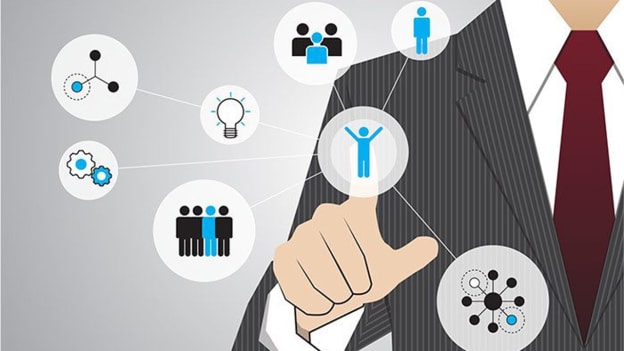Looking at work and the workforce through three lenses: purpose, potential, and perspective

Over the past two decades, 2020 was often referenced as a watershed year by which the world was to become an altered place. While that has come true, 2020 and 2021 have been epoch-making in the most unexpected ways. This (hopefully) once-in-a-lifetime event has also caused massive changes in popular perceptions of many issues. Chief amongst them is expectations that the workforce had from its employers.
In Deloitte’s 2021 Millennial and Gen Z Survey, 72 percent millennials and 66 percent Gen Zs in India said that they have made choices over the type of work they’d do and the organisations they’re willing to work for, based on their personal beliefs/ethics. These beliefs include a preference for purpose beyond profit, a desire to do good, and a yearning for workplaces that focus on 360-degree well-being. They were also clear about how they can contribute to an organisation’s success – it’s not just by being tech-savvy, but also through showing flexibility/adaptability, creativity, critical thinking, and the courage to challenge the status quo.
If organisations are to enable work and the workforce to thrive in this state of flux, their mandate must embrace the three Ps: purpose, potential, and perspective.
Purpose makes for a foundation at the intersection of economic, social, and human interest. This foundation evolves and not erodes with time and serves as a benchmark against which actions and decisions can be weighed. Through potential, organisations can reimagine the capabilities of their people in an environment where reinvention rules. And finally, perspective gives organisations the big picture, which prevents them from being paralysed by a multitude of futures and options.
Imbibing every aspect of work with purpose
An organisation that wants to embed meaning into each aspect of everyday work, can start by ensuring that it is creating connections across individual jobs, team objectives, and the organisation’s mission. Well-being can be internalised into every aspect of the design and delivery of work itself, such that the scales shift from output to outcome. Closely aligned is truly understanding the workforce, so that policies and programmes are geared towards bringing out their best, not just for the benefit of the organisation’s and clients’ bottom lines, but also for the benefit of the workforce themselves. Everyday actions and employee skills should also have the end objective of making an impact that matters in the organisation’s ecosystem. Leaders must focus on mentoring and coaching employees to find meaning and purpose in the work they do and delivering accordingly. While that may not happen overnight, nurturing talent will help them start slowly but powerfully − owning their roles and goals in making results happen.
To move from the “existing purpose” that helps the organisation thrive, instead of just surviving, the “new purpose” should be co-created, which means that employees should have a concrete influence over the organisation’s purpose, actions that achieve it, and outcomes that emanate from it.
Designing and organising work to maximise the human potential for thinking, creating, and doing
Seventy-two percent of the executives in the 2021 Deloitte Global Human Capital Trends survey said that “the ability of their people to adapt, reskill, and assume new roles” was either the most important or second most important factor in their organisations’ ability to navigate future disruptions. While much has been said about the role of Artificial Intelligence (AI) and related breakthroughs in the fourth industrial revolution, an organisation’s focus should be on technology that supplements and not supplants humans. This human-machine collaboration can allow organisations to not only streamline costs, but also create value and ultimately, provide meaning to the workforce. For instance, AI can be used for robust knowledge creation and knowledge sharing mechanisms that foster collaboration and upskilling, thereby affording the organisation resilience. Such a focus on learning will help the workforce grow and adapt based on their potential, instead of being tied down by their “formal” qualifications.
The perspective to move ahead from the usual and comfortable
Certain bold steps can help organisations get the perspective to embrace uncertainty and shape their future, even if it means exploring uncharted territories. They must nurture the ability of their leaders to consider the larger ecosystem that may extend beyond their organisation and learn to act accordingly. For example, consider the potential futures of customer and workforce, and experiment designing an organisation that learns to cruise in the possibilities of this future; or a human approach to compensation that goes beyond market value and factors in human value in the form of purpose, fairness, transparency, growth, and collaboration. As they look for answers that will help them navigate headwinds, organisations can also get a sound perspective by challenging themselves as to whether they have been asking the right questions. If they have gathered the answers, they need to examine whether pre-existing governance and processes enable them to truly sense what is happening across the organisation and workforce. An expanded focus and influence of the human resources team can help in perspective building and consequently, recovering and thriving over the next decade.
Crises provide a valuable opportunity for attitudinal shifts and actions that would have hitherto been considered revolutionary. However, good intentions must be accompanied by a commitment to meaningful change, if these shifts and actions are to be sustainable and lead to recovery. In a post-COVID world, purpose, potential, perspective, and possibility are no longer future-focused aspirations, but the reality of the here and now. It’s up to you to wake up to them on time.
















